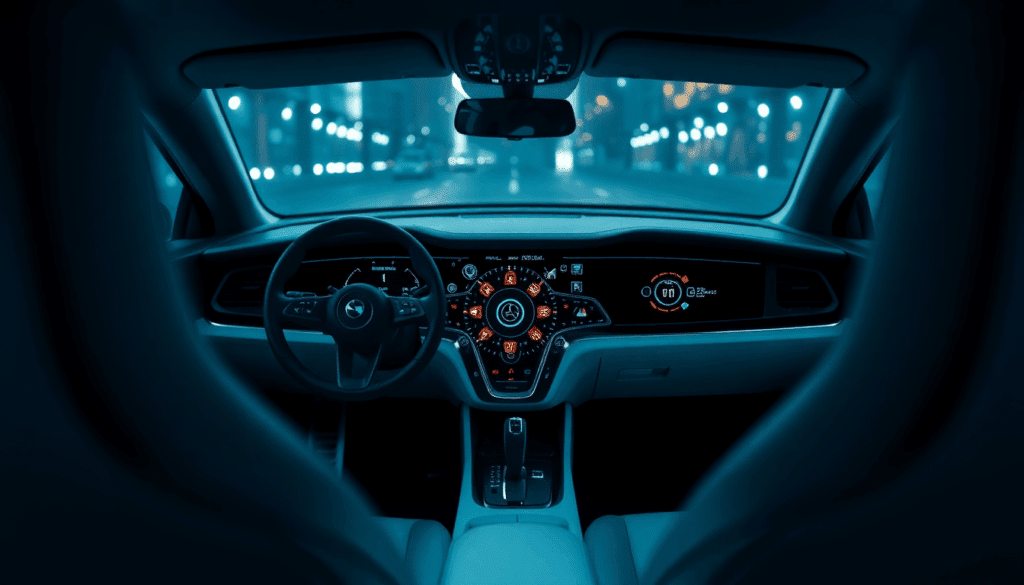Keeping the driver alert on long drives and ensuring the safety of children in the rear sets are two examples of how in-cabin monitoring systems work to increase the welfare of passengers. Infrared and radar are two of the main technologies that operate within a vehicle’s in-cabin sensing systems, explored in IDTechEx‘s report, “In-Cabin Sensing 2025-2035: Technologies, Opportunities, and Markets“.
DMS, OMS, and types of sensing
The two main systems that make up a vehicle’s in-cabin sensing are the driver monitoring system (DMS) and occupant monitoring system (OMS). While they have their own specific features, there is some overlap.
The DMS includes capacitive or torque steering wheel sensors, used to detect the presence of the driver’s hands on the wheel. Monitoring the driver’s heart rate can also be achieved through the steering wheel using integrated ECG sensors, although this is an emerging technology that has yet to see active use cases. Occupant monitoring systems, on the other hand, primarily use radars to monitor passengers. Features in the OMS include gesture control, occupancy detection for children that may be left in the vehicle, vital sign monitoring such as heart or respiration rate, facial recognition, position and movement tracking, and fatigue detection.
RGB-infrared cameras can be used in both the DMS and OMS, for gaze and head motion tracking, eyelid activity, facial recognition and identification, and to detect potential distraction and drowsiness. Time of flight (ToF) cameras can also be used in both systems, for gesture control, occupancy detection, vital-sign detection, facial recognition, and fatigue detection. However, ToF cameras aren’t as popular as radar for most OMS applications, partially because they are unable to penetrate physical barriers such as seats.
Infrared imaging use cases
Near infrared (NIR) light can be used to conduct imaging for the DMS. Invisible to the human eye, infrared light can be used continuously without causing disruption, and can work in any ambient light conditions, being suitable even for night driving. NIR imaging can detect eye movements and track gaze through reflected NIR light, even through glasses or sunglasses.
Smart features of infrared systems can be monetized as part of a secondary experience rather than solely for safety. Presence detection that can initiate functions such as seatbelt alerts or personalization features is one example of this, as well as facial recognition that can transition from smartphone usage into the automotive industry to further create a personalized experience within the vehicle.
Radar without visibility
Radar technologies within in-cabin monitoring systems can provide enhanced depth information, which can be particularly useful for a vehicle’s OMS. Children that may have been left in a rear seat could be detected by radar, while vital sign monitoring, such as breathing patterns recognized through chest movements, can also be achieved. Radar may therefore have an advantage over infrared systems as they don’t require a line of sight to work, with an ability to penetrate car seats and detect objects without direct visibility. However, the imaging and resolution of radar is poor compared to NIR and RGB imaging and comes at a greater cost. However, these costs are expected to decrease as adoption increases over the next decade. For large volume applications, the target cost per in-cabin radar module is around US$20-30.
Global regulations
Regulations that exist within the EU include the Driver Drowsiness and Attention Warning (DDAW) and the Advanced Driver Distraction Warning (ADDW), along with General Safety Regulations and the European New Car Assessment Programme (NCAP). In China, the Ministry of Transport has issued directives to strengthen safety within autonomous driving features, while the US introduced the Stay Aware for Everyone (SAFE) Act in 2020 amongst other existing regulations concerned with the safety of children in rear seats.
AI meets in-cabin sensing
The integration of AI into in-cabin monitoring systems could not only enhance safety but bring about increased ease and comfort. Identification is a large application area for AI, as it could personalize experiences for passengers upon receiving the relevant information from in-cabin sensors. Auto-loading personal settings such as seat, climate, or radio preferences is one use case for AI within in-cabin sensing, along with other smart features such as ordering coffee when drowsiness is detected, or suggesting charging stops when the car’s battery is low. AI systems could also reroute the car based on stress indicators, demonstrating emotional intelligence, while health and wellness tracking could prompt automatic posture correction to prevent strain during a long drive.
For more information on in-cabin sensing features and AI use cases, visit IDTechEx’s report, “In-Cabin Sensing 2025-2035: Technologies, Opportunities, and Markets” and the wider portfolio of Sensors, Haptics & Displays Research Reports and Subscriptions.


